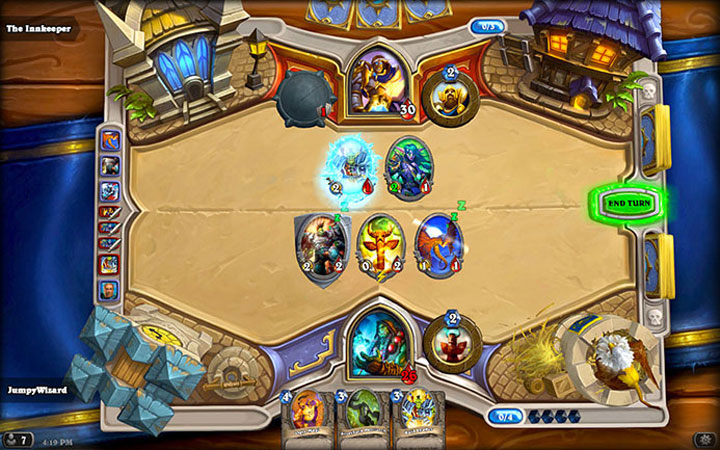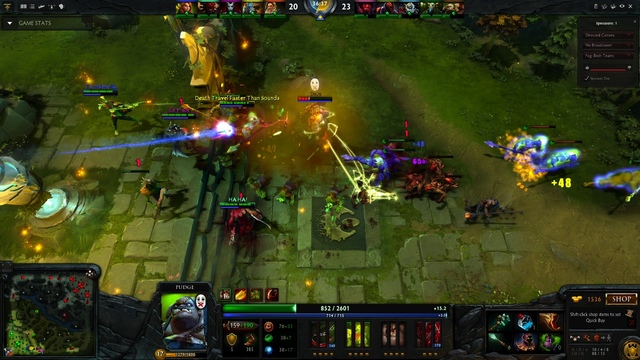I suppose I’ve been playing freemium
video games for a few years now.
(For those who haven’t heard of the
“freemium” business
model, it’s the strategy of selling a good
or service which is free to access but costs money for premium
features. Freemium software, especially video games, are popular
because the barrier to entry is made as low as possible to hook
people.
I highly recommend the South Park episode on the subject, “Freemium Isn’t Free”.)
Some of the freemium games I’ve played include (in chronological order of when I started playing each):
I like some of them more than others, but what I find most interesting
is that they all took different approaches to the freemium model.
Classical Freemium: Strictly Premium Content
Runescape is the oldest game in this list. I think I actually started playing
Runescape around the sixth grade, which is a fairly long time ago considering
I’ve graduated college and am working. Runescape’s freemium model most closely
resembles that of the the original freemium model (still popular in mobile
app stores) — the basic game and basic content is free, but advanced
features, zones, power ups, and content is reserved for premium players.
(Precedence for queueing to log onto a game server is also gives precedence
to premium players.) I never became a premium subscriber to Runescape,
and certainly never played it to the extent that I ran out of free content.
However, Runescape was my introduction to the dark side of freemium
games, the so-called
“pay to win” aspect. In any combat between two players, one a premium member
and one a basic member, it was almost never possible for the basic member
to win. The capabilities granted to premium members allowed them to dominate
basic members. Becoming a premium player was an eventuality for any high-level
Runescape player for this reason.
Runescape was an example of the classical freemium model, where players needed
to pay to essentially flip a switch (either once, or on a subscription basis).
Until a player was paying, they would lose; once they paid, they would win
constantly (sometimes to the point where the game lost its competitive appeal).
It was a simple model.
Modern Freemium: “Pay to Win”, Constantly
There is a newer, modern variation of the freemium model: one where
pay to win isn’t a binary switch, to be toggled once, but rather is
only enabled for minutes or hours, and requires constant infusions
of cash in order to keep active. One such game is Clash of Clans, with
which I have an on-again-off-again relationship. On the one hand, these
games tend to be interesting and engaging for new players. As long
as one doesn’t attempt to become competitive, they can have reasonable
fun without getting caught up in the pay to win features. However, when
a player hits high enough levels of player over time,
they’ll reach an echelon in the game within which it is
simply not possible to compete without regular cash infusions of dozens
or hundreds of dollars. The amount of money these players spend on the game
more than makes up for the amount of money that the free players do not
—
to the tune of a 3 billion dollar valuation for the game producer.

Here’s the classic example for Clash of Clans:
- A player reaches level 9 or 10, close to the top echelon in the game
- A player needs to construct armies to battle against opponents (other players)
- A player cannot effectively defend themselves from battles and getting
their territories plundered (for free); they can only attempt to keep
up by attacking opponents dozens of times a day.
- At this high level of play, it’s infeasible to even maintain status
through frequent attacks.
- It becomes necessary to use cash infusions to
accelerate army training time, resource production, and to immunize
territories from attack.
Although (when) I play Clash of Clans (it’s) with friends, I am extremely
turned off by this aspect of the game’s revenue model. The entire game is
necessarily designed around manipulating players into sinking hundreds or
thousands of hours of playing time into the game before forcing them
to pay to continue their progress through glass ceilings. I much prefer
the models offered by Dota and League of Legends/Heroes/Hearthstone.
Modern Freemium: Cosmetics and Collections
The prevailing model of freemium which I’ve seen in League of Legends (League),
Heroes of the Storm (Heroes), and Hearthstone can be summarized
as paying to accelerate permanently unlocking certain collectible in-game
characters, as well as a purely cash-based cosmetics system. The model
from Hearthstone is probably easiest to explain:
- Players receive basic playing cards for free
- The most powerful cards are rare and can only be attained by acquiring
packs of cards (and luck)
- Over time, players earn in-money resources to buy packs of cards. Packs
of cards are always available for cash purchase.
- New expansion packs are periodically added to the game, adding new cards
to the game. Keeping up with all the newest cards requires paying to buy
the packs as they’re added, or playing aggressively during expansion
releases.
- Certain items, like cosmetic upgrades to the games, are only ever available
to paying customers.

There’s certain nice things about this model, and there’s certain frustrating
things about it. It’s nice that it’s never truly pay-to-win – it is
technically possible to compete in pro circuits as a free player, and some
players do pull it off.
However, players are incentivized to pay (at least
somewhat) in order to keep up with the changes. Game producers can put
even more pressure
on free players by constantly and rapidly releasing new content, making it difficult for free players to keep up.
Postmodern Freemium: Purely Cosmetic
Dota 2’s model is the most interesting model, of all the games I’ve played.
All the fundamental aspects of the game (characters,
items, upgrades, etc.) are free to all players instantly upon installing the game.

Dota 2’s revenue comes from providing cosmetics enhancements to the game.
Players can purchase new voiceover packs, new skins for the HUD for the game,
accessories for their units, and more.
My (Current) Favorite Games
Right now, I’m actively playing Hearthstone and Dota 2, for different reasons.
I like how I can play a couple of games of Hearthstone on the
train once in a while and still keep up with the updates to the game.
I also like how releasing new cards changes the dynamic of the game over time,
keeping things fresh, but (at least so far) without devaluing the existing
cards in the game.
(It’s also nice that it doesn’t cost too much cell phone data to play.)
But for playing on my PC at home, I lean towards Dota 2. Although Dota’s
content tends to change slowly (only when new characters are released, which
is uncommon), I find strategy and focus required for the game is rewarding.
The absence of manipulation and coercion to pay money for the game is also
a breath of fresh air in a time when most applications and games tend to
demand purchases in order to get full access.